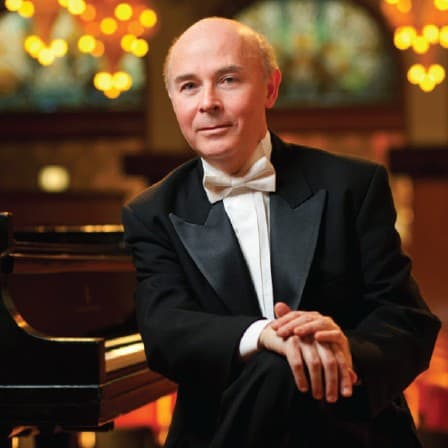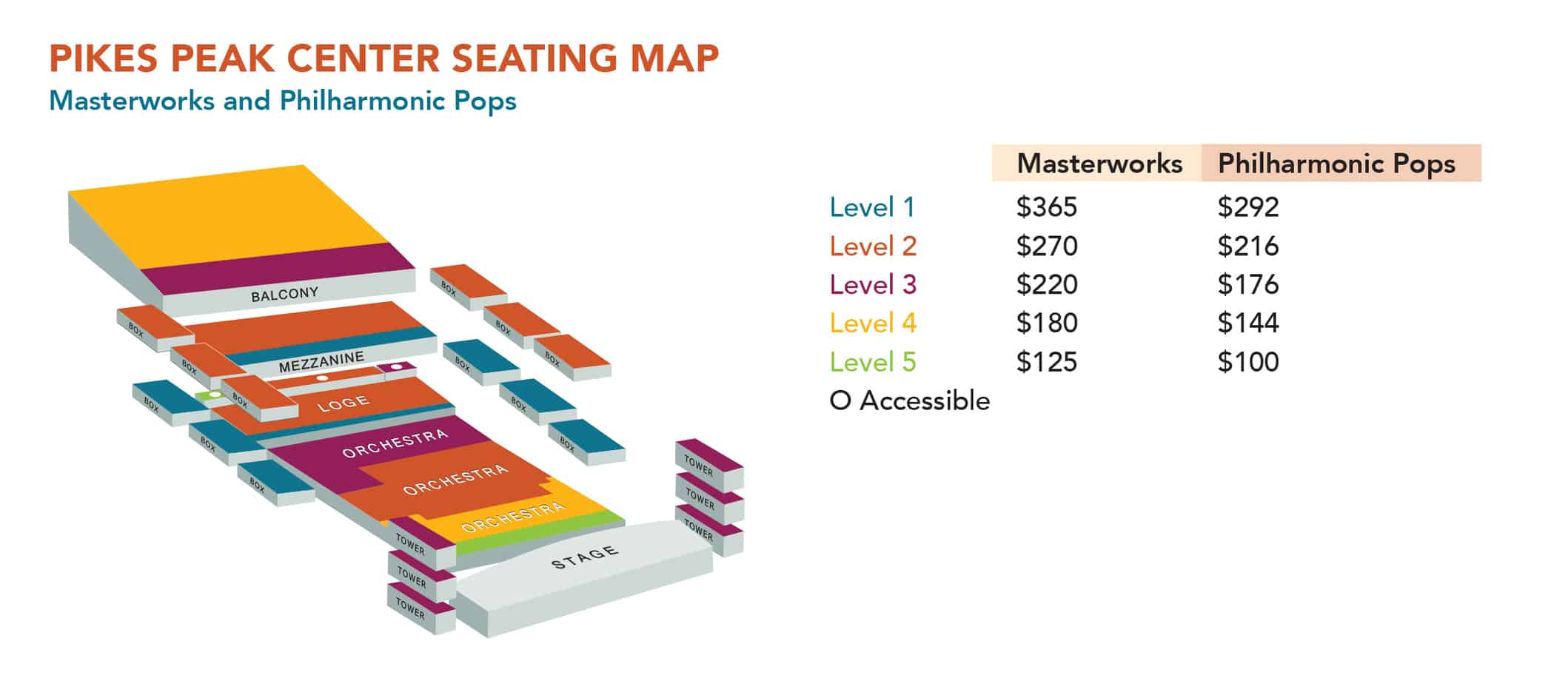


Beethoven Piano Concertos 3, 5
5225 N Nevada Ave
Colorado Springs,
CO
80918
United States
+ Google Map
Program
Beethoven Piano Concerto No. 3
Beethoven Piano Concerto No. 5 “Emperor”
About The Performance
Beethoven’s piano concertos are among the most loved and requested works of all time. The Colorado Springs Philharmonic will present all five concertos at the ENT Center in January and March of 2022.
Join us for Colorado Springs Philharmonic Pre-Concert talks. Go behind the curtain and inside the score with these 30-minute pre-concert conversations featuring conductors and guest artists giving their take on the program. Talks begin one hour before performance time.
Beethoven concerto notes …
Read More
Hearing these two concertos back to back in one performance allows us to appreciate exactly how much Ludwig van Beethoven shaped and permanently changed the genre of the piano concerto.
Keyboard concertos had been around since the late Baroque period, some 80 years earlier. Mozart, Johann Nepomuk Hummel, and other composers of the Classical period wrote dozens of them. Beethoven was especially inspired by Mozart’s later concertos, particularly the dramatic and emotive elements Mozart employed in his second movements (the second movement of a typical piano concerto of this time, with its slow tempo and freer form, allowed for the composer to express more individuality), in contrast to the stricter formats and faster tempos of the outer movements.
Beethoven’s affinity for rhythm gives all his music, but particularly the concertos, all of which he initially conceived as vehicles for himself to perform, particular vibrancy, even a kind of defiant energy. Given Beethoven’s hearing loss, which occurred gradually over two decades, it is no surprise that he connected most viscerally to rhythmic themes, which he could perceive through vibrations (the story about Beethoven cutting the legs of his piano so he could feel the vibrations through the floor as he played has been debunked by music historians in recent years, however).
With these and other musical innovations, Beethoven essentially declared the composer’s artistic imperative to make music that reflects the personal rather than the general, in a celebration of humanity’s gloriously variable and unique possibilities.
Ludwig van Beethoven
Piano Concerto No. 3 in C minor, Op. 37
Composer: born December 16, 1770, Bonn; died March 26, 1827, Vienna
Work composed: 1796 – 1803. Dedicated to Prince Louis Ferdinand of Prussia.
World premiere: April 5, 1803. Beethoven conducted from the piano at the Theater an der Wien.
Instrumentation: solo piano, 2 flutes, 2 oboes, 2 clarinets, 2 bassoons, 2 horns, 2 trumpets, timpani and strings.
Estimated duration: 34 minutes
Ludwig van Beethoven began working on his third piano concerto in 1796, composed most of it in 1800, and continued tinkering with it until the day of its premiere at one of his subscription concerts. The over-ambitious program actually featured three premieres: the Piano Concerto No. 3, the Symphony No. 2 and the oratorio Christ on the Mount of Olives. Perhaps fearing this program would not prove substantial enough, Beethoven also included his First Symphony.
Time constraints prevented Beethoven from writing down the solo part in time for the first performance. When Beethoven asked his friend Ignaz von Seyfried to turn pages for him during the concert, Seyfried had no idea how difficult this seemingly simple task would be. Seyfried recalled:
“I saw almost nothing but empty leaves; at the most on one page or the other a few Egyptian hieroglyphs wholly unintelligible to me scribbled down to serve as clues for him; for he played nearly all of the solo part from memory, since, as was so often the case, he had not had time to put it all down on paper. He gave me a secret glance whenever he was at the end of one of the invisible passages, and my scarcely concealed anxiety not to miss the decisive moment amused him greatly and he laughed heartily at the jovial supper which we ate afterwards.”
With the third piano concerto, Beethoven created a new stylistic framework for the genre as a whole. The Allegro con brio is structured around a short, unadorned rhythmic motif and a contrasting lyrical countermelody, which become the basis for a stormy musical dialogue between orchestra and soloist. In the Largo, Beethoven made a significant – and radical – decision regarding tonality. The key, E major, is harmonically very distant from that of C minor, an unheard-of choice in concerto writing for the time. In another departure from convention, it is the soloist who unveils the slow theme and its accompanying melody, before the orchestra. Later the soloist becomes the orchestra’s accompanist, with a stream of flowing arpeggios rippling quietly underneath the primary melody. The refrain of the Rondo: Allegro has a bouncy energy, which neatly offsets several contrasting interludes that range from tautly edgy to lyrically expansive. The two outer movements perfectly capture both the Sturm und Drang and the heroic qualities that Beethoven perceived in the key of C minor, a key he chose for many of his most significant works, including the Symphony No. 5.
Beethoven had another motivation for employing C minor in a piano concerto; by doing so, he paid homage to Mozart, specifically Mozart’s Piano Concerto No. 24, K. 491, also in C minor. During a rehearsal of K. 491, Beethoven remarked to the English composer J. B. Cramer, “Ah, Cramer, we shall never be able to do anything like that.” In his biography of Beethoven, Lewis Lockwood respectfully disagrees. “The Third breaks new ground in regions where Mozart had never traveled – in its dramatization of musical ideas, its juxtapositions of intensity with lyricism, [and] its decisive contrasts.”
Ludwig van Beethoven
Piano Concerto No. 5 in E-flat major, Op. 73, “Emperor”
Work composed: 1809. Dedicated to Beethoven’s patron and student, Archduke Rudolph.
World premiere: Johann Philipp Christian Schulz led the Gewandhaus Orchestra in Leipzig on November 28, 1811, with Friedrich Schneider at the piano.
Instrumentation: solo piano, 2 flutes, 2 oboes, 2 clarinets, 2 bassoons, 2 horns, 2 trumpets, timpani, and strings.
Estimated duration: 38 minutes
In May 1809, Napoleon’s troops attacked the city of Vienna, and throughout the following summer, the city shook with mortar fire. Ludwig van Beethoven, whose hearing was by this time severely impaired, suffered both the stress of living under attack and the constant painful assaults on his ears. In July Beethoven wrote his publisher, “Since May 4th I have produced very little coherent work, at most a fragment here and there. The whole course of events has in my case affected both body and soul … What a destructive, disorderly life I see and hear around me: nothing but drums, cannons, and human misery in every form.” On the night of May 11, Napoleon, having reached Vienna’s suburbs, launched a relentless barrage of firepower into the city that lasted for hours. Terrified, Beethoven hid in his brother Caspar’s cellar, his head buried in pillows to muffle the inescapable sound of pounding cannons. The physical and mental trauma of living under these conditions prevented Beethoven from working for most of that summer, although he did eventually manage resume composing. By the end of 1809, Beethoven had completed three piano sonatas, including the “Farewell,” along with what is arguably the most popular piano concerto he or anyone has ever written.
It is not clear how the nickname “Emperor” came to be associated with Piano Concerto No. 5. There is an apocryphal story about a French officer who, upon hearing the work performed in Vienna in 1812, exclaimed, “C’est l’Empereur!” If, as many have assumed, the emperor in question refers to Napoleon, Beethoven, who was severely traumatized by Napoleon’s continuous bombardment of Vienna, would certainly have disapproved.
By this point in his career, Beethoven’s penchant for innovation in the opening measures of his concertos had become a signature, and the Fifth is no exception. After an introductory orchestral chord, the piano enters with a cadenza. Cadenzas, unaccompanied virtuoso passages filled with scales and trills created from fragments of thematic material, usually appear at the close of a movement. By opening the concerto with a cadenza full of musical foreshadowing, Beethoven telegraphs the themes and ideas of the opening movement to the listener. The seamlessness of the opening movement gives listeners a sense of inevitability, as if the music could unfold in no other way. This semi-subversive cadenza acts as a subliminal suggestion, planting the basic elements of later themes in our ears without our noticing.
In the Adagio un poco mosso, listeners may recognize the opening notes of Leonard Bernstein’s song “Somewhere” from West Side Story (As Pablo Picasso famously said, “Good artists borrow; great artists steal.”). We can picture Beethoven, surrounded by aural and emotional chaos, escaping from the turmoil of his surroundings into an ethereal sound world. All too soon Beethoven brings us back to reality (i.e., the third movement) with an ingenious device: the whole orchestra drops down a half-step, from B to B-flat, and sustains that note while the piano storms into the Rondo with renewed vigor. Piano and orchestra execute a series of variations on this theme, each more elaborate than the next. The playful, humorous aspects of Beethoven’s personality reveal themselves here in the “false ending,” abrupt key changes, and generally buoyant mood throughout.
Johann Philipp Christian Schulz gave the premiere with pianist Friedrich Schneider and the Gewandhaus Orchestra in Leipzig on November 28, 1811 (Beethoven was too deaf to perform in public). In its review, the Allgemeine musikalische Zeitung reported that “[the audience] could hardly content itself with the ordinary expressions of recognition” in their excitement at hearing Beethoven’s greatest – (and though no one knew it at the time) last – piano concerto.
© Elizabeth Schwartz
Read Less
Concert Sponsors
Tiemens Private Wealth Management Group of Wells Fargo Advisors
Robert D. Lee and Susan A. Ashley
DpiX
Concert Co-Sponsors
Richard and Sandra Hilt
Welkin Sciences, LLC
Guest Artist Sponsors






